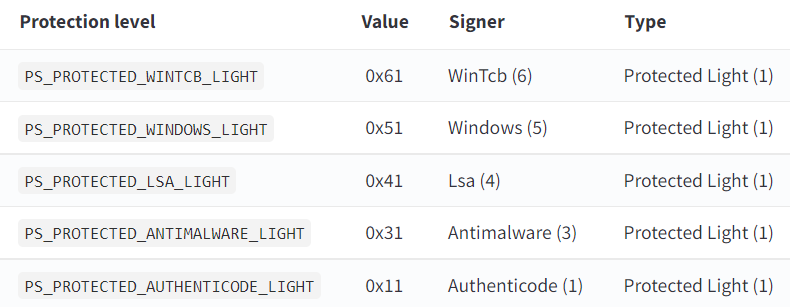Invented by mathematician Lester S. Hill in 1929, the Hill cipher is one of the first examples of the application of linear algebra to cryptography. The Hill cipher is a polygraphic cipher, which operates on blocks of text rather than individual characters. This is what makes it much more resistant to frequency analysis than simple substitution ciphers.
- Encryption: C = K × P (mod 26)
- Decryption: P = K⁻¹ × C (mod 26)
- The key matrix must be invertible modulo 26
- Text is processed in 2-letter blocks
- Odd-length messages are padded with 'X'
Mathematical Foundation
Basic Concept
The Hill cipher uses matrix multiplication to encrypt and decrypt messages. The Hill cipher encrypts plain text into ciphertext using a key matrix and is based on the linear transformation properties of modular arithmetic.
Key Components:
- Key Matrix (): An invertible matrix
- Plaintext Vector (): Numerical representation of text block
- Ciphertext Vector (): Encrypted result
- Modulus (): Typically 26 for English alphabet
The Encryption Formula
The fundamental encryption operation is expressed as:
Where:
- is the ciphertext vector
- is the key matrix
- is the plaintext vector
- for the English alphabet
For a key matrix, this expands to:
Which gives us:
The Decryption Formula
Decryption requires the inverse of the key matrix:
For the key matrix to be invertible modulo 26, its determinant must satisfy:
Complete Mathematical Example
Let's work through a complete example with the plaintext "HILL" using a key matrix.
Step 1: Setup
Plaintext: HILL
Key Matrix:
Step 2: Convert to Numbers
Plaintext blocks: ,
Step 3: Verify Key Invertibility
Since , the matrix is invertible.
Step 4: Encryption
For the first block:
For the second block:
Ciphertext: "LNDC"
Step 5: Calculate Inverse for Decryption
Using the Extended Euclidean Algorithm: , so .
Step 6: Verification by Decryption
This gives us "HI", confirming our encryption was correct! ✓
Implementation Walkthrough
Step 1: Text to Numbers Conversion
First, we convert letters to numbers (A=0, B=1, ..., Z=25):
def text_to_numbers(text):
"""Convert text to numerical values"""
return [ord(char.upper()) - ord('A') for char in text if char.isalpha()]
def numbers_to_text(numbers):
"""Convert numerical values back to text"""
return ''.join(chr(num + ord('A')) for num in numbers)
# Example
plaintext = "HELLO"
numbers = text_to_numbers(plaintext)
print(f"HELLO -> {numbers}") # [7, 4, 11, 11, 14]
Step 2: Key Matrix Setup
import numpy as np
def create_key_matrix(key_string, n):
"""Create n×n key matrix from string"""
key_numbers = text_to_numbers(key_string)
# Ensure we have enough characters
while len(key_numbers) < n * n:
key_numbers.extend(key_numbers)
# Create matrix
matrix = np.array(key_numbers[:n*n]).reshape(n, n)
return matrix
# Example: 2×2 matrix
key = "GYBNQKURP"
key_matrix = create_key_matrix(key, 2)
print("Key Matrix:")
print(key_matrix)
Step 3: Matrix Determinant and Invertibility
For decryption, the key matrix must be invertible modulo 26. This requires that:
For a matrix , the determinant is:
The modular inverse of the determinant must exist. We need to find such that:
def mod_inverse(a, m):
"""Find modular multiplicative inverse"""
def extended_gcd(a, b):
if a == 0:
return b, 0, 1
gcd, x1, y1 = extended_gcd(b % a, a)
x = y1 - (b // a) * x1
y = x1
return gcd, x, y
gcd, x, _ = extended_gcd(a % m, m)
if gcd != 1:
return None # No inverse exists
return (x % m + m) % m
def matrix_determinant_mod(matrix, mod):
"""Calculate matrix determinant modulo m"""
det = int(round(np.linalg.det(matrix)))
return det % mod
def is_key_valid(matrix, mod=26):
"""Check if matrix is invertible mod 26"""
det = matrix_determinant_mod(matrix, mod)
return mod_inverse(det, mod) is not None
Step 4: Encryption Process
def hill_encrypt(plaintext, key_matrix, block_size):
"""Encrypt plaintext using Hill cipher"""
# Convert to numbers and pad if necessary
numbers = text_to_numbers(plaintext)
# Pad with 'X' (23) if needed
while len(numbers) % block_size != 0:
numbers.append(23) # 'X'
ciphertext_numbers = []
# Process each block
for i in range(0, len(numbers), block_size):
block = np.array(numbers[i:i+block_size])
# Matrix multiplication mod 26
encrypted_block = np.dot(key_matrix, block) % 26
ciphertext_numbers.extend(encrypted_block)
return numbers_to_text(ciphertext_numbers)
# Example encryption
plaintext = "ATTACKATDAWN"
key_matrix = np.array([[3, 2], [5, 7]]) # This matrix is invertible mod 26
ciphertext = hill_encrypt(plaintext, key_matrix, 2)
print(f"Plaintext: {plaintext}")
print(f"Ciphertext: {ciphertext}")
Step 5: Matrix Inversion Modulo 26
The inverse of a matrix modulo is calculated as:
Where the adjugate matrix for is:
Therefore:
def matrix_inverse_mod(matrix, mod):
"""Calculate matrix inverse modulo m"""
det = matrix_determinant_mod(matrix, mod)
det_inv = mod_inverse(det, mod)
if det_inv is None:
return None
# For 2×2 matrix: [[a,b],[c,d]] -> [[d,-b],[-c,a]] / det
if matrix.shape == (2, 2):
a, b = matrix[0]
c, d = matrix[1]
adj_matrix = np.array([[d, -b], [-c, a]])
inv_matrix = (det_inv * adj_matrix) % mod
return inv_matrix
# For larger matrices, use more complex algorithm
# (Implementation omitted for brevity)
return None
Step 6: Decryption Process
def hill_decrypt(ciphertext, key_matrix, block_size):
"""Decrypt ciphertext using Hill cipher"""
# Get inverse key matrix
inv_key_matrix = matrix_inverse_mod(key_matrix, 26)
if inv_key_matrix is None:
raise ValueError("Key matrix is not invertible mod 26")
# Convert to numbers
numbers = text_to_numbers(ciphertext)
plaintext_numbers = []
# Process each block
for i in range(0, len(numbers), block_size):
block = np.array(numbers[i:i+block_size])
# Matrix multiplication with inverse key
decrypted_block = np.dot(inv_key_matrix, block) % 26
plaintext_numbers.extend(decrypted_block.astype(int))
return numbers_to_text(plaintext_numbers)
# Example decryption
decrypted = hill_decrypt(ciphertext, key_matrix, 2)
print(f"Decrypted: {decrypted}")
Complete Implementation
Here's a full working implementation:
import numpy as np
from math import gcd
class HillCipher:
def __init__(self, key_matrix):
self.key_matrix = np.array(key_matrix)
self.block_size = self.key_matrix.shape[0]
if not self._is_valid_key():
raise ValueError("Invalid key matrix - not invertible mod 26")
def _is_valid_key(self):
"""Check if key matrix is valid for Hill cipher"""
det = int(round(np.linalg.det(self.key_matrix))) % 26
return gcd(det, 26) == 1
def _text_to_numbers(self, text):
"""Convert text to numbers (A=0, B=1, ..., Z=25)"""
return [ord(c.upper()) - ord('A') for c in text if c.isalpha()]
def _numbers_to_text(self, numbers):
"""Convert numbers back to text"""
return ''.join(chr(int(n) + ord('A')) for n in numbers)
def _mod_inverse(self, a, m=26):
"""Find modular multiplicative inverse"""
def extended_gcd(a, b):
if a == 0:
return b, 0, 1
g, y, x = extended_gcd(b % a, a)
return g, x - (b // a) * y, y
g, x, _ = extended_gcd(a % m, m)
return (x % m + m) % m if g == 1 else None
def _matrix_inverse_mod26(self):
"""Calculate matrix inverse modulo 26"""
det = int(round(np.linalg.det(self.key_matrix))) % 26
det_inv = self._mod_inverse(det)
if self.block_size == 2:
a, b = self.key_matrix[0]
c, d = self.key_matrix[1]
adj_matrix = np.array([[d, -b], [-c, a]])
return (det_inv * adj_matrix) % 26
# For larger matrices, use cofactor method
# (Implementation simplified for demonstration)
return None
def encrypt(self, plaintext):
"""Encrypt plaintext using Hill cipher"""
numbers = self._text_to_numbers(plaintext)
# Pad with 'X' if necessary
while len(numbers) % self.block_size != 0:
numbers.append(23) # 'X'
ciphertext_numbers = []
for i in range(0, len(numbers), self.block_size):
block = np.array(numbers[i:i+self.block_size])
encrypted_block = np.dot(self.key_matrix, block) % 26
ciphertext_numbers.extend(encrypted_block)
return self._numbers_to_text(ciphertext_numbers)
def decrypt(self, ciphertext):
"""Decrypt ciphertext using Hill cipher"""
inv_matrix = self._matrix_inverse_mod26()
numbers = self._text_to_numbers(ciphertext)
plaintext_numbers = []
for i in range(0, len(numbers), self.block_size):
block = np.array(numbers[i:i+self.block_size])
decrypted_block = np.dot(inv_matrix, block) % 26
plaintext_numbers.extend(decrypted_block.astype(int))
return self._numbers_to_text(plaintext_numbers)
# Usage example
if __name__ == "__main__":
# Create cipher with 2×2 key matrix
key = [[3, 2], [5, 7]] # This matrix has det = 11, which is coprime to 26
cipher = HillCipher(key)
# Encrypt message
message = "MEETMEATMIDNIGHT"
encrypted = cipher.encrypt(message)
print(f"Original: {message}")
print(f"Encrypted: {encrypted}")
# Decrypt message
decrypted = cipher.decrypt(encrypted)
print(f"Decrypted: {decrypted}")
Troubleshooting: "Invalid key matrix" Error
If you get a ValueError: Invalid key matrix - not invertible mod 26, it means that the key matrix you provided cannot be inverted modulo 26, which is a requirement for the Hill cipher to work. A matrix is invertible mod 26 only if:
- Its determinant is non-zero mod 26.
- The determinant is coprime to 26 (i.e., gcd(det, 26) == 1).
Here's how to fix it:
def check_matrix_validity(matrix):
"""Check if a matrix is valid for Hill cipher"""
det = int(round(np.linalg.det(matrix))) % 26
is_valid = gcd(det, 26) == 1
print(f"Matrix: {matrix.tolist()}")
print(f"Determinant: {det}")
print(f"GCD(det, 26): {gcd(det, 26)}")
print(f"Valid for Hill cipher: {is_valid}")
return is_valid
# Test some matrices
test_matrices = [
np.array([[6, 24], [1, 16]]), # Invalid: det = 72 % 26 = 20, gcd(20,26) = 2
np.array([[3, 2], [5, 7]]), # Valid: det = 11, gcd(11,26) = 1
np.array([[1, 0], [0, 1]]), # Valid: det = 1, gcd(1,26) = 1 (identity matrix)
]
for matrix in test_matrices:
check_matrix_validity(matrix)
print("-" * 40)
Quick fixes for invalid matrices:
- Change one element slightly and recheck
- Use the identity matrix
[[1,0],[0,1]]for testing - Use our proven examples:
[[3,2],[5,7]]or[[7,8],[11,11]]
Mathematical Security Analysis
Key Space Analysis
For an Hill cipher key matrix over :
Total possible matrices:
Valid key matrices: Those with
Since , a matrix is invertible mod 26 if and only if its determinant is coprime to 26. This significantly reduces the key space.
Frequency Analysis Resistance
The Hill cipher provides resistance to simple frequency analysis because:
- Multiple plaintext letters map to one ciphertext letter
- Context dependency: The same letter encrypts differently based on its block position
- Polygraphic nature: Operates on -grams rather than individual characters
However, it's still vulnerable to bigram and trigram frequency analysis for small block sizes.
Linear Algebra Attack Complexity
For a known-plaintext attack with block size :
- Required known blocks: linearly independent plaintext-ciphertext pairs
- Computational complexity: for matrix inversion
- Success probability: High if attacker has sufficient known pairs
The attack succeeds when the plaintext matrix is invertible:
Differential Cryptanalysis Vulnerability
The linear nature makes Hill cipher vulnerable to differential attacks. If we have two plaintexts and with corresponding ciphertexts and :
This linear relationship can be exploited to recover key information.
Strengths
- Resistance to Frequency Analysis: Operates on blocks rather than individual characters
- Mathematical Foundation: Based on solid linear algebra principles
- Scalability: Can use larger key matrices for increased security
Vulnerabilities
- Known Plaintext Attack: If attacker knows plaintext-ciphertext pairs, they can solve for the key matrix
- Linear Weakness: The linear nature makes it vulnerable to mathematical attacks
- Key Space Limitation: Limited by requirement for invertible matrices mod 26
Cryptanalysis Example
With known plaintext-ciphertext pairs, an attacker can set up a system of linear equations. For pairs of plaintext-ciphertext blocks:
This can be written in matrix form as:
Where and .
If is invertible, the attacker can recover the key:
This demonstrates the vulnerability of the Hill cipher to known-plaintext attacks.
def known_plaintext_attack(plaintext_blocks, ciphertext_blocks):
"""
Attempt to recover key matrix from known plaintext-ciphertext pairs
"""
# For 2×2 matrix, need 2 plaintext-ciphertext block pairs
# Set up system: C = K × P (mod 26)
P = np.array(plaintext_blocks).T # Plaintext matrix
C = np.array(ciphertext_blocks).T # Ciphertext matrix
# Solve: K = C × P^(-1) (mod 26)
P_inv = matrix_inverse_mod(P, 26)
if P_inv is not None:
K = np.dot(C, P_inv) % 26
return K
return None
Modern Applications and Variations
Digital Hill Cipher
Modern implementations might use:
- Larger alphabets (ASCII, Unicode)
- Bigger key matrices (8×8, 16×16)
- Different moduli (prime numbers)
class ModernHillCipher:
def __init__(self, key_matrix, alphabet_size=256):
self.key_matrix = np.array(key_matrix)
self.alphabet_size = alphabet_size
self.block_size = self.key_matrix.shape[0]
def encrypt_bytes(self, data):
"""Encrypt binary data"""
numbers = list(data)
# Pad to block size
while len(numbers) % self.block_size != 0:
numbers.append(0)
encrypted = []
for i in range(0, len(numbers), self.block_size):
block = np.array(numbers[i:i+self.block_size])
enc_block = np.dot(self.key_matrix, block) % self.alphabet_size
encrypted.extend(enc_block.astype(int))
return bytes(encrypted)
Practical Considerations
Key Generation
import random
def generate_random_key(size):
"""Generate a random invertible key matrix"""
while True:
matrix = np.random.randint(0, 26, (size, size))
det = int(round(np.linalg.det(matrix))) % 26
if gcd(det, 26) == 1: # Check if invertible
return matrix
# Examples of valid and invalid matrices
print("Valid matrices (invertible mod 26):")
valid_examples = [
[[3, 2], [5, 7]], # det = 11, gcd(11,26) = 1 ✓
[[7, 8], [11, 11]], # det = 21, gcd(21,26) = 1 ✓
[[1, 2], [3, 4]], # det = -2 ≡ 24, gcd(24,26) = 2 ✗ which is not valid
]
for i, matrix in enumerate(valid_examples):
det = (matrix[0][0] * matrix[1][1] - matrix[0][1] * matrix[1][0]) % 26
is_valid = gcd(det, 26) == 1
print(f"Matrix {i+1}: {matrix}")
print(f" Determinant mod 26: {det}")
print(f" Valid: {is_valid}")
print()
# Generate 3×3 key
key_3x3 = generate_random_key(3)
print("Generated 3×3 key:")
print(key_3x3)
Performance Optimization
For large texts, consider:
- Vectorized operations with NumPy
- Parallel processing for independent blocks
- Precomputed inverse matrices
Legacy
While not secure by modern standards, the Hill cipher serves as an excellent educational tool for understanding:
- Matrix operations in cryptography
- The importance of key management
- Vulnerability analysis techniques
- The evolution from classical to modern cryptography
Conclusion
Although the Hill cipher is not relevantly secure anymore, it was a real advance in the early development of cryptography since it was the first algorithm that utilized linear algebra. In particular, the way Hill used linear algebra was in the form of matrix multiplication over finite fields.
The Hill cipher was the first algorithm to begin to take the transition away from simple substitution ciphers where the use of letter frequency and similar statistical techniques could still be used to reveal the plaintext, and toward structured and mathematical transformations.
It's essential to highlight that the basic principle of using vectors and matrices to transform plaintext is inherently linked to modern algorithms such as the Advanced Encryption Standard (AES). For example, AES heavily relies on linear algebra, including both plain vector calculation and hardened operations (e.g., the mixcolumns operation is matrix multiplication performed on a finite field (GF(2^8)) with the goal of achieving both diffusion and security through structured mathematical transformations).
In conclusion, the Hill cipher's importance as the first application of linear algebra and its geometric interpretations and analyses to cryptography cannot be understated, as this significance can be seen in contemporary secure digital communications' mathematical engines.
Additional Notes
Remember!: While fascinating historically, never use classical ciphers like Hill for actual security - always use modern, well-vetted cryptographic algorithms!
Also python np.linalg.det() returns a float; rounding is necessary but can lead to inaccuracies for larger matrices. Use integer methods or sympy for exact arithmetic if precision is critical.
Try It Yourself!
Ready to experiment with the Hill cipher? Head over to to Interactive Hill Cipher Visualization.








